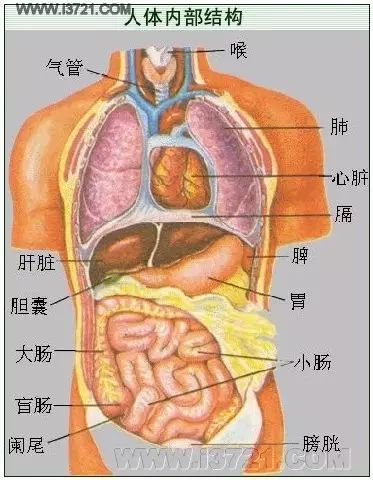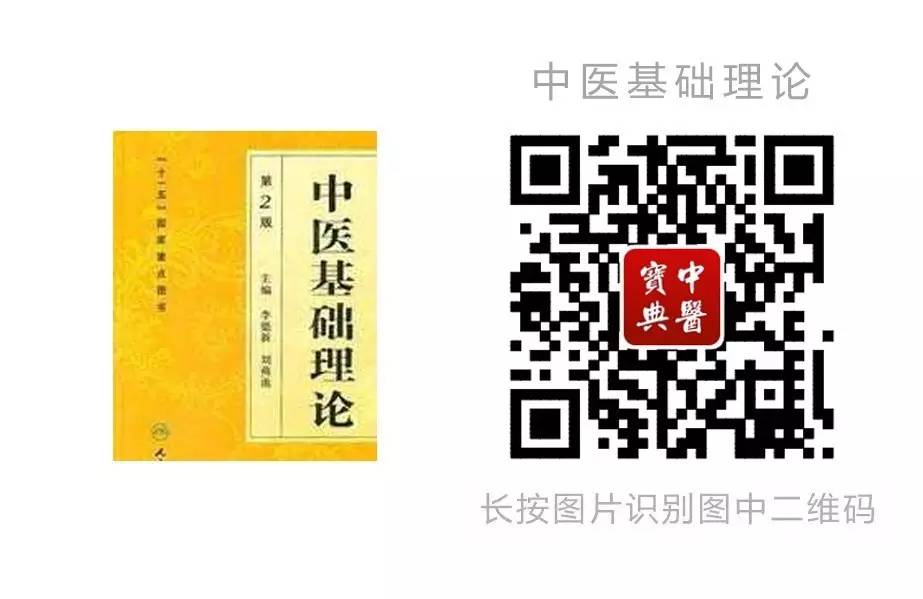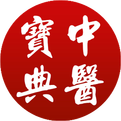

1. The Five Zang Organs
1. Heart: The heart is the residence of the spirit, the master of blood, and the root of the pulse. It belongs to the fire element in the Five Elements theory; its physiological functions include: ① governing blood vessels; ② governing consciousness; the heart opens to the tongue, connects with the pulse in the body, its manifestation is on the face, associated with joy in emotions, and sweat in fluids. The heart and small intestine are interrelated.
2. Lung: The lung is the place of the corporeal soul and the master of qi, belonging to the metal element in the Five Elements theory; its physiological functions include: ① governing qi and controlling respiration; ② regulating the dispersing and descending of qi; ③ managing the water pathways; ④ overseeing the hundred vessels; assisting the heart in regulating the circulation of qi and blood; the lung connects to the throat, integrates with the skin, its manifestation is in the hair, opens to the nose, associated with worry in emotions, and mucus in fluids. The lung and large intestine are interrelated.
3. Spleen: The spleen is the source of the transformation and transportation of qi and blood, the foundation of postnatal life, and stores intention, belonging to the earth element in the Five Elements theory. Its physiological functions include: ① governing transformation and transportation; ② raising clear qi; ③ controlling blood; it opens to the mouth, integrates with the flesh, governs the limbs, its manifestation is in the lips, associated with thought in emotions, and saliva in fluids; it is interrelated with the stomach.
4. Liver: The liver is the place of the ethereal soul, the storehouse of blood, and the root of tendons, belonging to the wood element in the Five Elements theory, governing the upward and outward movement. Its physiological functions include: ① promoting the smooth flow of qi; ② storing blood; it opens to the eyes, integrates with the tendons, its manifestation is in the nails, associated with anger in emotions, and tears in fluids. The liver and gallbladder are interrelated.
5. Kidney: The kidney is the foundation of pre-natal essence, stores will, and the lower back is the organ of the kidney, belonging to the water element in the Five Elements theory; its physiological functions include: ① storing essence, governing growth, development, and reproduction; ② governing water; ③ governing the inhalation of qi; it integrates with the bones, governs the marrow, its manifestation is in the hair, opens to the ears and the two lower yin, associated with fear in emotions, and saliva in fluids. The kidney and bladder are interrelated.

2. The Six Fu Organs
1. Gallbladder: Physiological function: stores and excretes bile, the gallbladder governs decision-making.
2. Stomach: Physiological function: receives and rots food and drink, the stomach descends to harmonize.
3. Small Intestine: Physiological function: governs the reception and transformation of substances, separates the clear from the turbid, “the lower abdomen governs fluids”.
4. Large Intestine: Physiological function: transmits and transforms waste, the large intestine governs fluids.
5. Bladder: Physiological function: stores and excretes urine, relying on the kidney’s qi transformation function.
6. San Jiao (Triple Burner): Physiological function: facilitates the movement of original qi, oversees the qi mechanism and transformation, serving as the pathway for the movement of water and fluids.
3. The Extraordinary Fu Organs
These organs are hollow in shape and similar to the Fu organs, but their function is to store essence and qi, similar to the Zang organs. Except for the gallbladder, which is classified as a Fu organ, they do not have interrelations or associations with the Five Elements.

WeChat ID: zhongyidaxue
Yin-Yang Theory
-
Introduction to Yin-Yang
-
Characteristics of Yin-Yang
-
Changes in Yin-Yang
-
Attributes of Yin-Yang
-
Relationships of Yin-Yang
-
Clinical Applications of Yin-Yang
-
Mutual Dependence of Yin-Yang
-
Yin-Yang Flow
Five Elements Theory
-
Introduction to the Five Elements in TCM
-
Methods of Classifying the Five Elements
-
Interactions of the Five Elements
-
Generative and Overcoming Cycles of the Five Elements
-
Transformations and Restraints of the Five Elements
-
Mother-Son Relationships of the Five Elements
-
Guidance of the Five Elements
-
Clinical Applications of the Five Elements Theory
-
Classification Table of the Five Elements in TCM
Related Articles
-
Introduction to Traditional Chinese Medicine
-
History of Traditional Chinese Medicine
-
The Essence of Traditional Chinese Medicine Treatment
-
Fundamental Theories of Traditional Chinese Medicine (Essence Version)
-
The Origins of Traditional Chinese Medicine
-
Historical Names of Traditional Chinese Medicine
-
Diagram of the Twelve Time Periods Corresponding to Organs
-
TCM Differentiation of Syndromes
-
Differentiation of Causes: External Injury Syndromes
-
Differentiation of Causes: Dietary and Lifestyle Syndromes
-
Differentiation of Causes: Emotional Syndromes
-
Differentiation of Causes: Six Excesses and Epidemic Syndromes
-
Classification of Pulse Signs and Associated Diseases
-
Basic Understanding of Traditional Chinese Medicine (Original Title: Starting from the Rational Use of Chinese Medicine)

